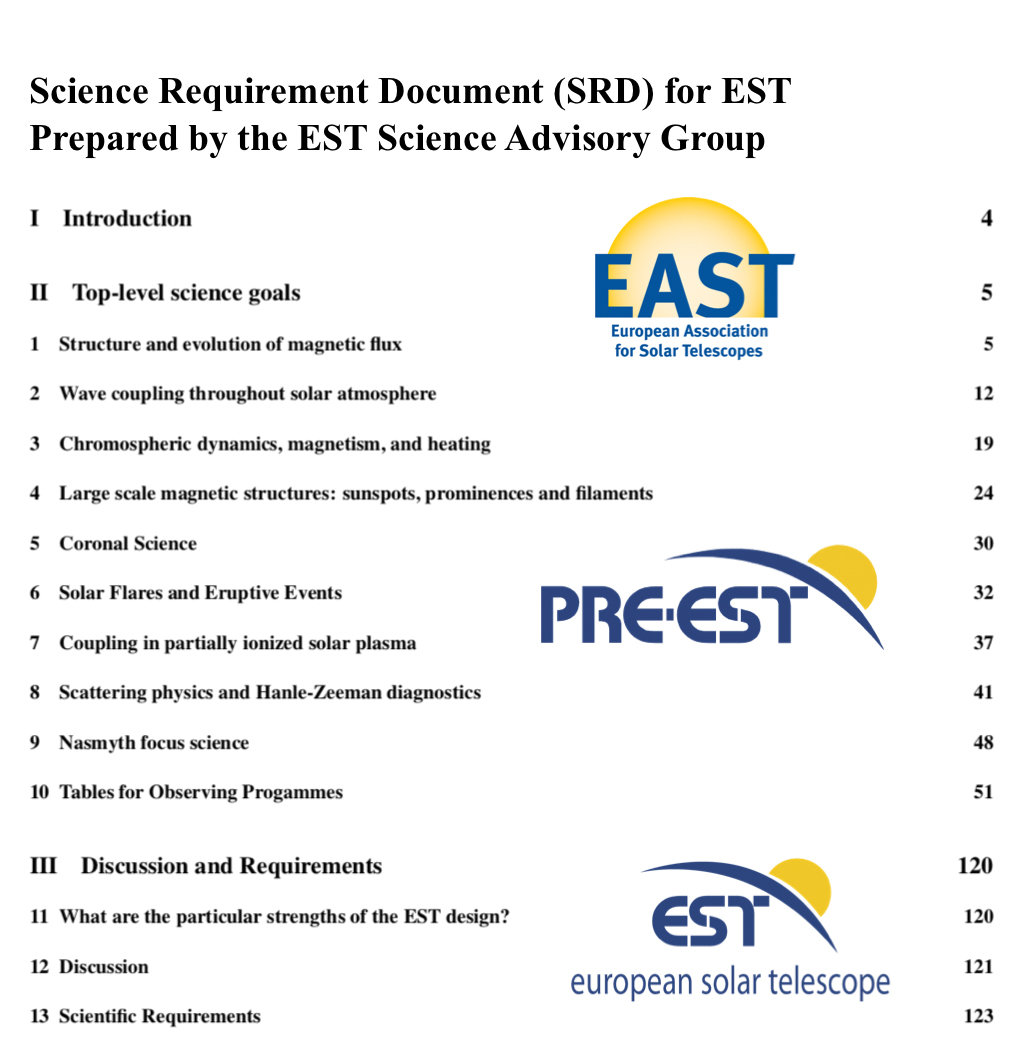The Science Advisory Group presented a draft of the final version in May 2019. One of the main goals of the document is to identify critical science requirements for the telescope.
The SAG was constituted in November 2017 by the General Assembly of EAST and the Board of the PRE-EST project. It was charged with the task of providing a final statement on the science requirements.
Based on the conceptual design, the update of the Science Requirement Document (SRD) takes into account recent technical and scientific developments, to ensure that EST provides significant advancement beyond the current state-of-the-art.
The SRD develops the top-level science objectives of EST into individual science cases. Identifying critical science requirements is one of its main goals. Those requirements will define the capabilities of EST and the post-focus instrument suite. The technical requirements for the final design of EST will be derived from the SRD.
EST science cases
In May 2019, the SAG presented a draft of the final version of the SRD. Such a draft is currently under discussion.
The science cases collected in the SRD are not intended to cover all the science questions to be addressed with EST, but rather to provide a precise overview of the capabilities that will make EST a competitive state-of-the-art telescope, one to push the boundaries of our knowledge over the next few decades.
Those science cases are then translated into observing programmes describing the type of detailed observations needed to solve specific science problems. An effort is being made to define the parameters of the required observations as accurately as possible, taking into account both present capabilities and technological developments expected inthe near future.
As the top-level goal of EST is to understand small-scale processes in the solar atmosphere, it is designed to be a solar ‘microscope’. EST should be capable of reaching the highest possible image quality and spatial resolution. The final design must be optimised for the highest possible photon flux, with the premises of securing polarimetric accuracy and sensitivity.

